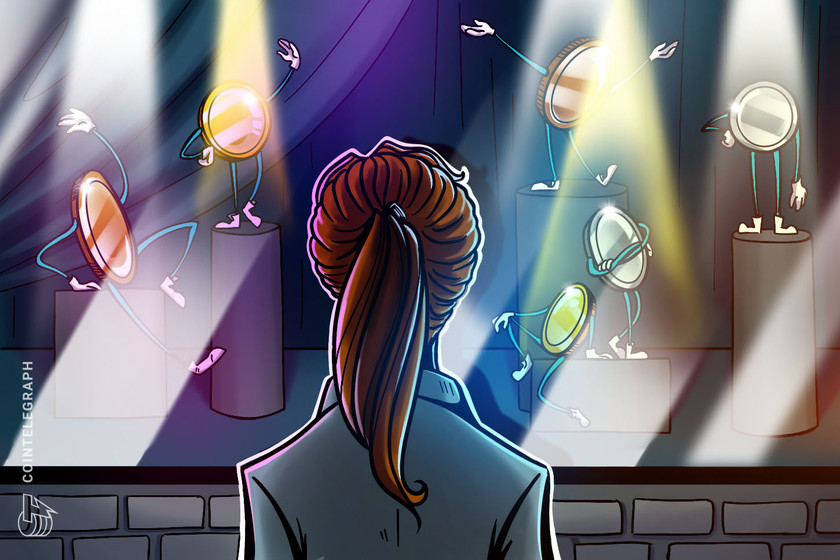
Not to derail the hype train, but NFTs might not be as nonfungible as you think.
Among the many offshoots produced as a bi-product of the ongoing cryptocurrency experiment, nonfungible tokens have turned out to be one of the most explosive. In a few short months, over half a billion dollars worth of NFTs changed hands, as celebrities (from lists A to Z) clamored to profit from crypto’s latest craze.
But amid the rush to jump on the bandwagon, few have stopped to consider the veracity of the terminology applied to NFTs. After all, why would you stop to ponder semantics when there are millions of dollars to be made at the click of a button?
But in lieu of said millions, we decided to ask the question: Are nonfungible tokens actually a little bit fungible after all?
Fungibility
An asset or good is considered to be fungible if it can be interchanged with another of the same type of equal value. Hence the United State dollar is fungible because any one dollar can be exchanged for any other. The same applies to Bitcoin (BTC).
Fungibility makes up one of the four pillars of Aristotle’s concept of “good money” and is possibly the most important in creating a working currency. All cryptocurrencies are fungible by nature.
Nonfungible assets are those that can’t be trusted to have equal value due to unique variations in their make-up. For example, while diamonds could be useful in a bartering situation, their minute differences in cut, shape and quality exclude them from meeting Aristotle’s evaluation of good money.
NFTs
But when it comes to NFTs, currency characteristics are irrelevant. The whole point is that each unit of the asset can be varied, unique, exclusive and rare. This is precisely where much of the perceived value of the NFT comes from — its nonfungibility.
On the Ethereum blockchain, NFTs are mostly built upon a token standard known as ERC-1155. Tokens built using ERC-1155 ensure nonfungibility and, as such, would be useless in forming the backbone of a regular currency.
Regular Ethereum tokens are built on the ERC-20 standard, which enables the issuance of identical, fungible tokens for use as actual currency. For this very reason, an ERC-20 token’s utility in registering anything unique or rare is null and void.
But what if…?
But hypothetically, if one were to create 21 million ERC-1155 NFTs — all programmed to be identical to each other — and then distribute them in a free airdrop, would an actual currency not naturally begin to form?
What would stop the tokens from being traded on the open market, each holding the same identical value as the other? This concept is not an invention of Cointelegraph’s; “fractionalized NFTs” are a phenomenon that has already emerged and quickly drawn the ire of United States Securities and Exchange Commissioner Hester Peirce.
Peirce, also referred to as “Crypto Mom” for her lenient stance on cryptocurrency regulation, warned that the use of fractionalized NFTs skirts dangerously close to breaking SEC securities laws. The very reason NFTs don’t constitute securities is because they are unique and nonfungible, noted Peirce, who said people were “getting very creative in the types of NFTs they’re putting out there.”
A numbers game
Conversely, the ERC-20 standard Ethereum token that many people will have held in their wallets at some point is designed to be fungible — but is that always the case?
An Ethereum developer who helped create the ERC-1155 token standard, Philippe Castonguay, recently posed a question to his Twitter followers that probed this very issue. We’ve established that ERC-20 tokens are fungible, but could they be nonfungible?
Castonguay polled his followers, asking: “Is an ERC-20 token with a forever total supply of 1 an NFT?”
Is an ERC-20 token with a forever total supply of 1 an NFT?
— Philippe Castonguay (@PhABCD) April 6, 2021
Some 46.8% of respondents answered yes, 36.4% answered no, and 16.7% declined to speculate.
Fine-tuning the definition further, Castonguay then asked if a non-divisible ERC-20 token with a capped supply of one was an NFT. After all, an ERC-20 token is divisible down to many (possibly infinite) decimal points, meaning its utility as an NFT would be gone.
“Is an ERC-20 token that is not divisible (0 decimals) with a forever maximum supply of 1 an NFT?” Castonguay asked. This time 72.1% said yes, 15.4% said no, and 12.5% declined to answer.
Cointelegraph asked Castonguay about the usage of the terms fungibility and nonfungibility as applied to cryptocurrency tokens. Is there really that much difference between the two? Are we just talking about two different ways of skinning a cat? He answered:
“Indeed, fungibility is a spectrum and the term NFT offers a quite binary view of the situation!”
One social media philosopher summed up the situation by referencing the age-old question that has plagued the world’s deepest thinkers for millennia. User Safex Vigilante proffered the analogy:
This is just like the chicken or egg dilemma.
— Safex Vigilante (@SafexVigilante) April 6, 2021
from https://ift.tt/3fP3Med
https://ift.tt/31TGFHj
Comments
Post a Comment
Any questions, Please.